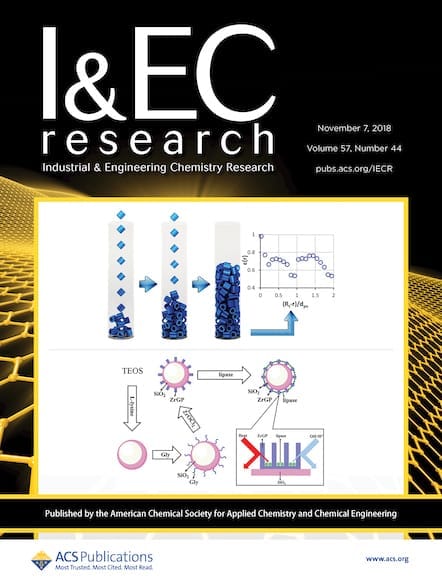The American Chemical Society is a strong advocate for the safe practice of chemistry across all disciplines. In fact, safety, together with professionalism and ethics, is one of ACS’s Core Values. Chemists understand that working with chemicals and developing new materials and chemical processes involve some degree of risk. Precautions can be taken to mitigate […]

The American Chemical Society is a strong advocate for the safe practice of chemistry across all disciplines. In fact, safety, together with professionalism and ethics, is one of ACS’s Core Values. Chemists understand that working with chemicals and developing new materials and chemical processes involve some degree of risk. Precautions can be taken to mitigate risks in order to protect people and the environment. Fostering a culture of safety in classrooms, academic labs, and industrial settings is critical to protecting the lives and health of all investigators.
June has been designated as National Safety Month by the National Safety Council, to draw attention to the primary mission of safety. A number of ACS journals directly serve educators and those researchers involved in developing and applying efficient, effective, and safe processes.
In addition, ACS Publications is pleased to announce the upcoming launch of ACS Chemical Health & Safety! Beginning in August/September 2019, this new journal acquired from the Division of Chemical Health & Safety will announce a new Editor-in-Chief and begin accepting manuscript submissions. Look for the first volume in 2020!
We invite you to join us in recognizing National Safety Month. Collected below are articles from 2018 and 2019 published in Industrial & Engineering Chemistry Research, Journal of Chemical Education, and Organic Process Research & Development. These publications highlight efforts to prioritize the safe teaching and practice of chemistry.
I&EC Research
Process Safety Analysis for Ti3C2Tx MXene Synthesis and Processing
DOI: 10.1021/acs.iecr.8b05416
***
A Process Intensification Methodology Including Economic, Sustainability, and Safety Considerations
DOI: 10.1021/acs.iecr.8b04146
***
Multiobjective Early Design of Complex Distillation Sequences Considering Economic and Inherent Safety Criteria
DOI: 10.1021/acs.iecr.8b00577
***
Synthesis of Operable Process Intensification Systems—Steady-State Design with Safety and Operability Considerations
DOI: 10.1021/acs.iecr.8b04389
***
Reactive Distillation Column Design for Tetraethoxysilane (TEOS) Production. Part II: Dynamic Properties and Inherent Safety
DOI: 10.1021/acs.iecr.8b04962
***
Inherently Safer Process Design of Natural Gas Liquefaction Processes through Multiobjective Optimization—Part I. With Inherent Safety Indexes
DOI: 10.1021/acs.iecr.8b05983
***
Investigation of Inherently Safer Design Through Process Intensification: Novel Safety Assessment Methodology and Case Study in C3–Alkyne Hydrogenation Distillation Process
DOI: 10.1021/acs.iecr.8b04854
***
Controllability, Energy-Efficiency, and Safety Comparisons of Different Control Schemes for Producing n-Butyl Acetate in a Reactive Dividing Wall Column
DOI: 10.1021/acs.iecr.9b01321
***
Insights into the Synthesis of Poly(ethylene 2,5-Furandicarboxylate) from 2,5-Furandicarboxylic Acid: Steps toward Environmental and Food Safety Excellence in Packaging Applications
DOI: 10.1021/acs.iecr.9b00661
Journal of Chemical Education
Playing with Fire: Chemical Safety Expertise Required
DOI: 10.1021/acs.jchemed.8b00152
***
Identifying the Scope of Safety Issues and Challenges to Safety Management in Swedish Middle School and High School Chemistry Education
DOI: 10.1021/acs.jchemed.8b00054
***
Presenting Safety Topics Using a Graphic Novel, Manga, To Effectively Teach Chemical Safety to Students in Japan, Taiwan, and Thailand
DOI: 10.1021/acs.jchemed.7b00451
***
Introduction to Laboratory Safety for Graduate Students: An Active-Learning Endeavor
DOI: 10.1021/acs.jchemed.8b00774
***
Revising the Division of Chemical Education Safety Guidelines for Chemical Demonstrations
DOI: 10.1021/acs.jchemed.7b00802
***
Development of an Undergraduate Course in Chemical Laboratory Safety through an Academic/Industrial Collaboration
DOI: 10.1021/acs.jchemed.7b00599
***
Increasing Enthusiasm and Enhancing Learning for Biochemistry-Laboratory Safety with an Augmented-Reality Program
DOI: 10.1021/acs.jchemed.8b00116
***
Introducing Toxicology into the Undergraduate Chemistry Laboratory Using Safety Data Sheets and Sunscreen Activities
DOI: 10.1021/acs.jchemed.8b00408
***
Consider submitting your research for a Special Issue on Chemical Safety Education.
OPR&D
Improved Safety during Transfer of Pyrophoric tert-Butyllithium from Flasks with Protective Seals
DOI: 10.1021/acs.oprd.8b00151
***
Process Safety Considerations for the Supply of a High-Energy Oxadiazole IDO1-Selective Inhibitor
DOI: 10.1021/acs.oprd.9b00105
***
Safety Evaluation of the Copper-Mediated Cross-Coupling of 2-Bromopyridines with Ethyl Bromodifluoroacetate
DOI: 10.1021/acs.oprd.8b00261
***
Evaluation of Potential Safety Hazards Associated with the Suzuki–Miyaura Cross-Coupling of Aryl Bromides with Vinylboron Species
DOI: 10.1021/acs.oprd.8b00001
